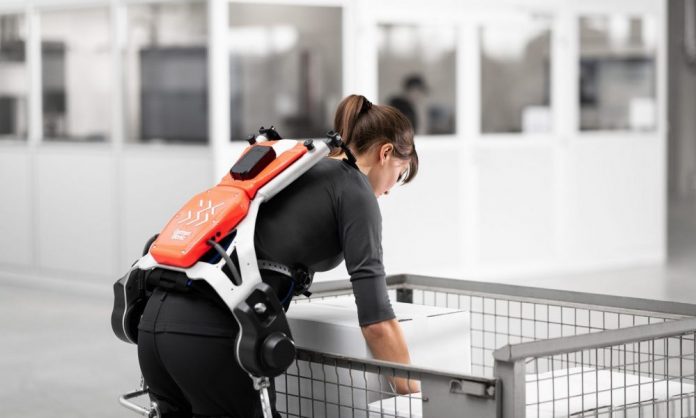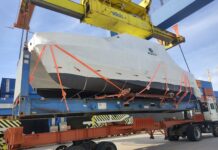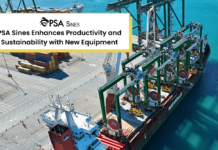
DB Schenker has reported that they have successfully tested the use of exoskeletons at several of their logistics locations. The logistics service provider says this is part of their continuing efforts to relieve warehouse staff of physically-demanding tasks.
Exoskeletons, also known as outer skeletons or support robots, are electro-mechanical support structures carried on the body. They are primarily designed to support warehouse employees during lifting and rotating movements of the body. In particular, they help to protect the lumbar vertebrae and the back muscles. The strain on these parts of the body is often the cause of illness and inability to work. The focus of the pilot project was the order picking and sequencing of packages weighing up to 15 kilograms. Employees equipped with an exoskeleton removed the packages from storage racks and then placed them on pallets.
“Here at DB Schenker, our employees are our most important and valuable asset. I am therefore very pleased that we are taking another important step towards testing better and, above all, healthier working conditions for our employees,” says Thomas Schulz, CHRO at Schenker AG. “This brings us closer to our strategic target of being the employer of choice as an innovative and leading logistics service provider.”
Gerald Mueller, Head of Process and Efficiency Management at Schenker Deutschland AG, says: “The feedback from the doctoral students and DB Schenker employees after the test was very positive and once again confirmed that the long-term use, in conjunction with ergonomically optimally-designed logistics processes, can improve the health of the employees. In the coming months, we will now be analyzing the results in detail and checking whether the exoskeletons will then be included in the area of process optimization at DB Schenker.”
DB Schenker says that even in highly-automated warehouses, employees are still indispensable for many activities, such as lifting loads from their packaging. While general lifting operations are performed by machines such as forklifts or robots, lifting out is still too complex for the control technology of the machines. Here, an exoskeleton combines the power of the machine with the human motor competence, providing the perfect solution.
อัพเดตข่าวสารและบทความที่น่าสนใจในอุตสาหกรรมโลจิสติกส์ก่อนใคร ผ่าน Line Official Account @Logistics Mananger เพียงเพิ่มเราเป็นเพื่อน @Logistics Manager หรือคลิกที่นี่














